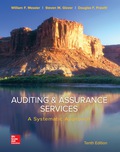
a.
Concept Introduction:
The Securities act of 1933 was based on the concept that if an entity is offering the securities then, it should provide the possible investors proper information about the securities and issuer that helps investors to make an appropriate investment decision. It also ensures to avoid any fraud and misrepresentation occurred in securities that are sold for the public
To describe:Theelement that must be established to support a cause of action based on negligence
b.
Concept Introduction:
The Securities act of 1933 was based on the concept that if an entity is offering the securities then, it should provide the possible investors proper information about the securities and issuer that helps investors to make an appropriate investment decision. It also ensures to avoid any fraud and misrepresentation occurred in securities that are sold for the public
To describe:The element that must be established to support a cause of action based on a rule of 10b-5 violation
c.
Concept Introduction:
The Securities act of 1933 was based on the concept that if an entity is offering the securities then, it should provide the possible investors proper information about the securities and issuer that helps investors to make an appropriate investment decision. It also ensures to avoid any fraud and misrepresentation occurred in securities that are sold for the public
To describe:The correct assertions regarding lack of privitywith regard to cause of action on negligence and fraud.
Want to see the full answer?
Check out a sample textbook solution
Chapter 20 Solutions
EBK AUDITING & ASSURANCE SERVICES: A SY
 Auditing: A Risk Based-Approach (MindTap Course L...AccountingISBN:9781337619455Author:Karla M Johnstone, Audrey A. Gramling, Larry E. RittenbergPublisher:Cengage LearningBusiness Its Legal Ethical & Global EnvironmentAccountingISBN:9781305224414Author:JENNINGSPublisher:Cengage
Auditing: A Risk Based-Approach (MindTap Course L...AccountingISBN:9781337619455Author:Karla M Johnstone, Audrey A. Gramling, Larry E. RittenbergPublisher:Cengage LearningBusiness Its Legal Ethical & Global EnvironmentAccountingISBN:9781305224414Author:JENNINGSPublisher:Cengage

